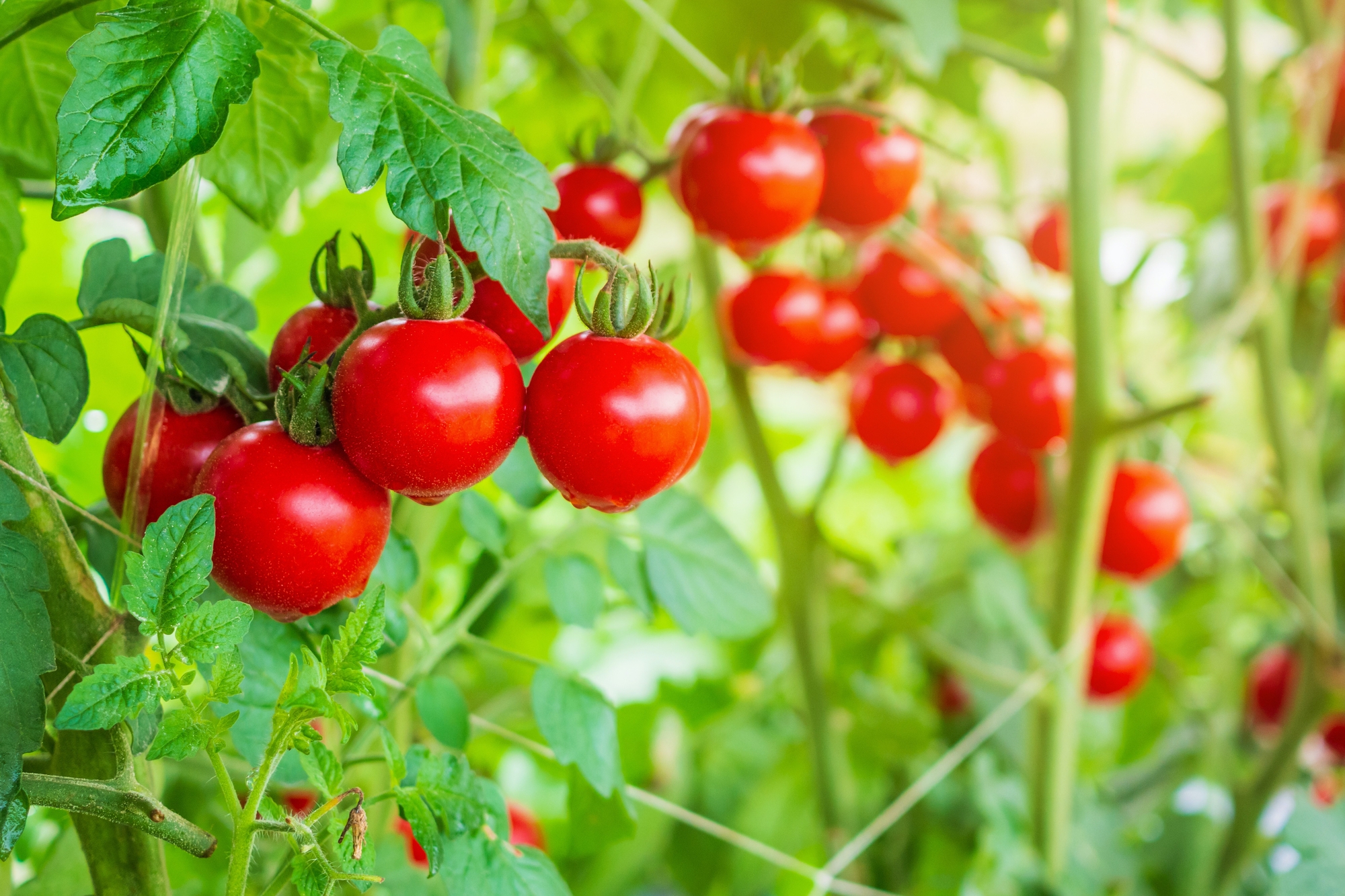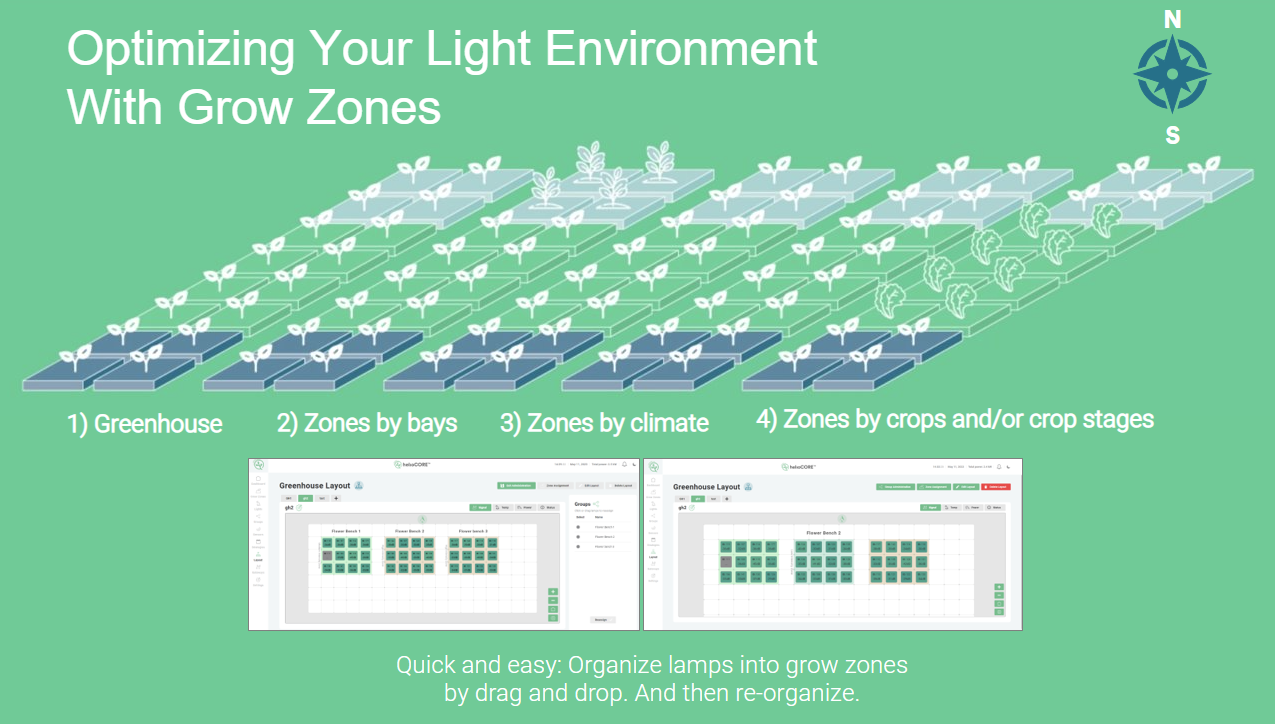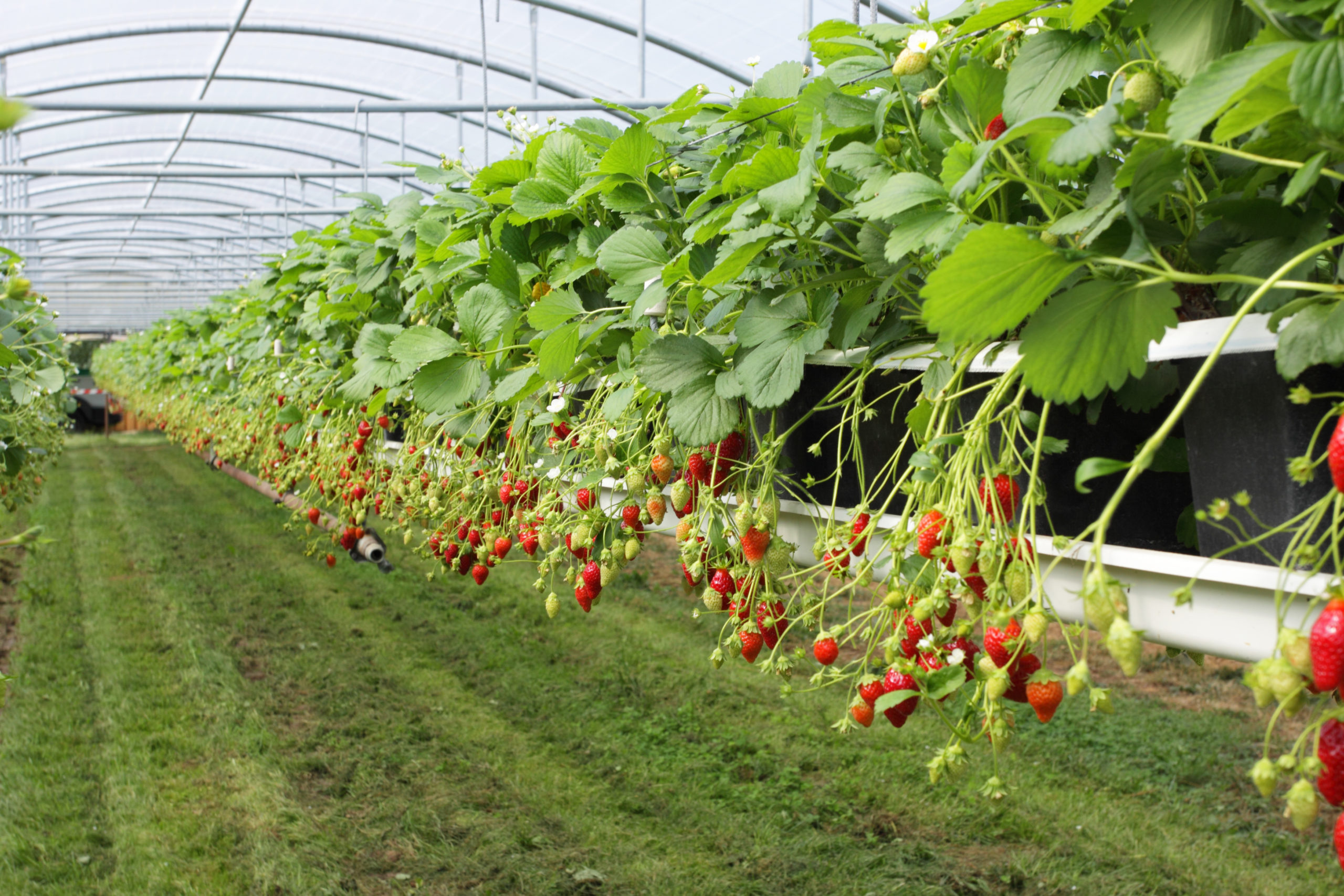Research
Articles
The Impact of Light Spectrum on Crop Quality: Narrow Spectrum vs. Broad Spectrum
When growing crops, a higher yield output means more earnings. But it is important to not only focus on the yield but also the quality of the crop, to deliver a uniform high-quality crop and to minimize waste and lost revenue. The light environment is a vital part of delivering this.
Narrow spectrum use (only red and blue) vs. broad spectrum use (red, blue, green/white) in crop production and the efficiency of it has long been a topic among growers, researchers, and suppliers. Where many advocate that a narrow spectrum is more efficient for photosynthesis and energy consumption. Following years of research, we would state that the spectrum is very much dependent on the growers’ goal, crop/variety and environment.
Basil and Lemon Balm: Quality vs. Yield in Different Light Spectra
Research conducted by our helioCARE-team using our fully controllable ELIXIA light, has shown that basil grown under narrow waveband spectrum (blue and red diodes only) show patchiness in the coloration of the leaves, making it less attractive to the end consumer. This was not present at all under a broad spectrum. The two spectra has equal power consumption of 275 watts but with different spectral output. The yield for basil was however the same for the two spectra. We could also see the same outcome for lemon balm, with the same yield but lower quality.
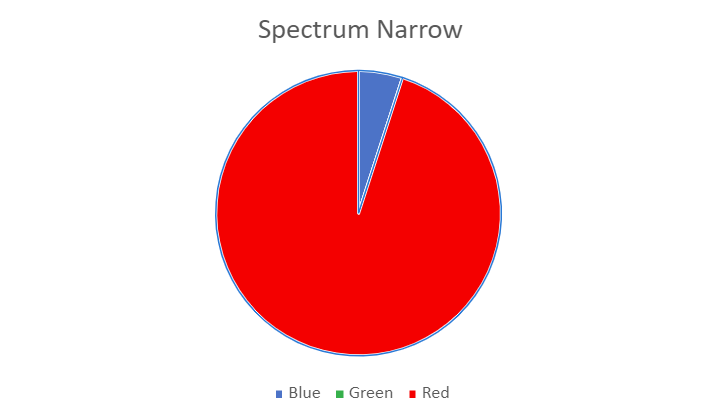
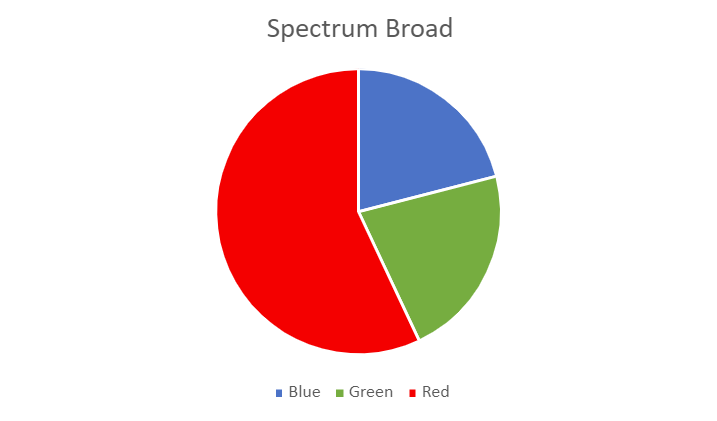
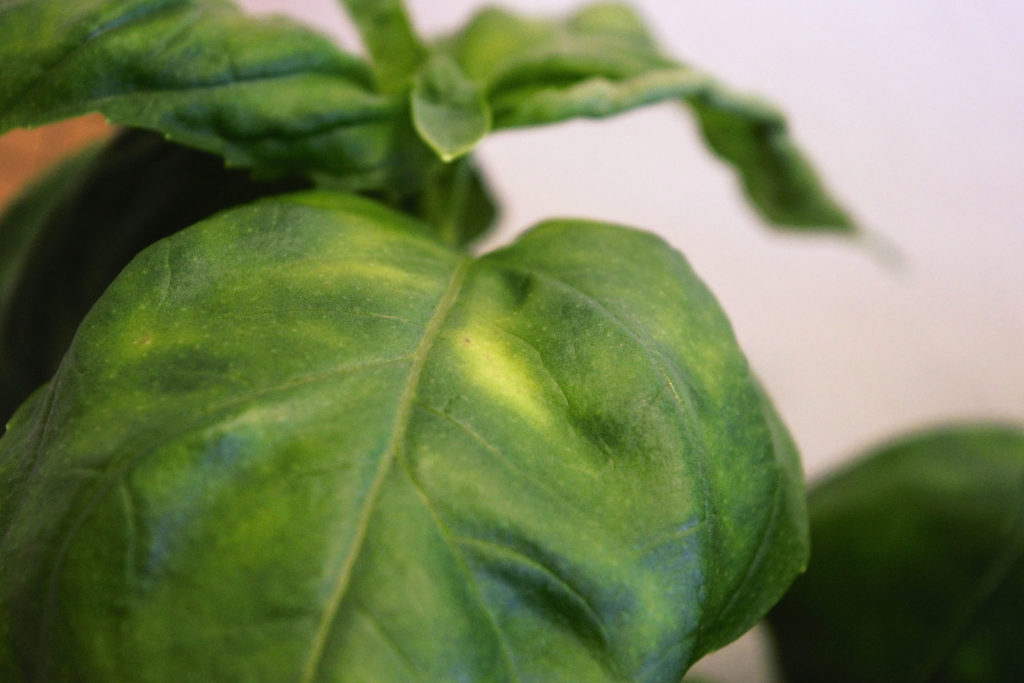
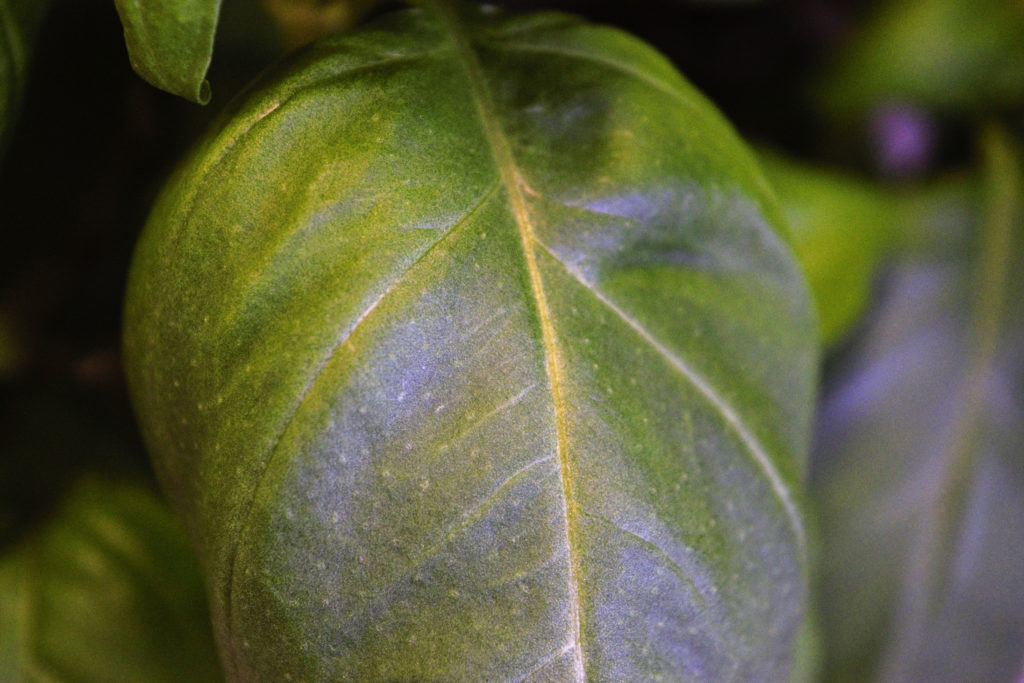
Spectrum: Narrow
Spectrum: Broad
Another thing we have learned during our decades of research is that sometimes what is the answer to one thing doesn’t work for another aspect. Take yield for instance, we have grown lettuce under the same spectrum but different intensities. The higher intensity provided much higher yield in terms of biomass, but the quality of the lettuce was poor; thick leaves that were not saleable.
Considering Bumblebees in Crop Production: The Importance of a Flexible Spectrum
Besides yield, the aspect of quality is important and needs to be taken into consideration, which is stated above. Basil is a very aromatic crop and has a strong characteristic taste. Compared to other crops the basil can provide high aroma when grown in right conditions, however, spectrum has some impact. Which was shown in a set of experiments that was done in 2016 in collaboration with Chalmers, SLU and Rise, investigating spectrum impact on aromatic compounds and ascorbic acid (vitamin C) in basil. The light treatment with increased blue light proportion had a positive effect on aromatic compound content in basil. However the highest impact was found on the vitamin C content which were higher for the blue light basil. Other experiments have shown that the spectrum has an impact on anthocyanin production as well as taste and texture.
Crops like tomatoes thrive in a high-light environment where increased DLI is directly linked to an increase in yield. Here, growers often go for an efficient high-output narrow spectrum in their greenhouse. However, while efficiency is important, a dynamic spectrum or a small amount of white/green light could also be beneficent for high-light crops.
We did a trial with a tomato grower who harvested the tomatoes in the morning. Since the tomato has high light requirements, the supplemental light needed to be on during the harvest. The supplemental LED in the greenhouse was both a broad “white” and Blue/Red spectrum. The head grower stated “There was an expectation or belief that the picking was the same colour.
Which was not the case. So, the light clearly influences how the pickers register the colour.” Since the trial is ongoing, we can yet share results of yield.
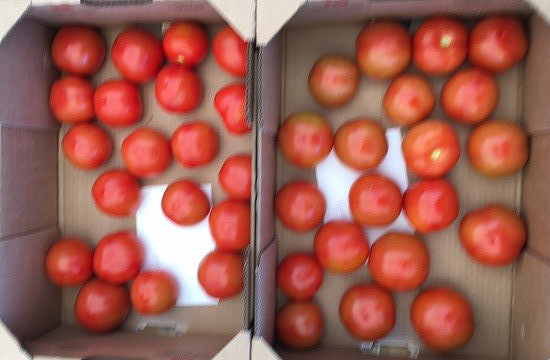
Another important aspect to consider in terms of light quality and spectrum is Bumblebees. Bumblebees are often used as pollinators and can’t see the red light in the spectrum. Bumblebees’ vision is within the UV, blue and green regions. The purple LED grow light (blue and red only) options are often very red heavy. Sometimes with even up to 95 % of the light in the red part of the spectrum. Bumblebees need daylight to navigate and during the darkest part of the year, with heavy red light, they can have a hard time navigating in these conditions.
Therefore a “whiter” light or flexible spectrum would be preferential in these environments. Heliospectra’s Light spectra have peaks both in the blue and green parts of the spectra. Making it a good option when you need to take pollination into consideration.
To achieve the best results, select a grow light solution that supports the energy needs of your plants, while ensuring your desired crop characteristics and outcomes. This means that a fixture with the highest efficacy might not give you the desired outcome. The optimal grow light should be one that is developed to fit your indoor or greenhouse growing environment. Partly the geographical location but first and foremost to your specific crop and cultivation requirements, plant varieties and production cycles.

Image Credit: https://www.hortidaily.com/article/31112/Bumblebees-no-longer-lost-when-the-lights-are-on/
Get in touch with us!
From custom light planning, to tailored quotes, and everything in between,
our team of horticulture experts are always ready to assist.




